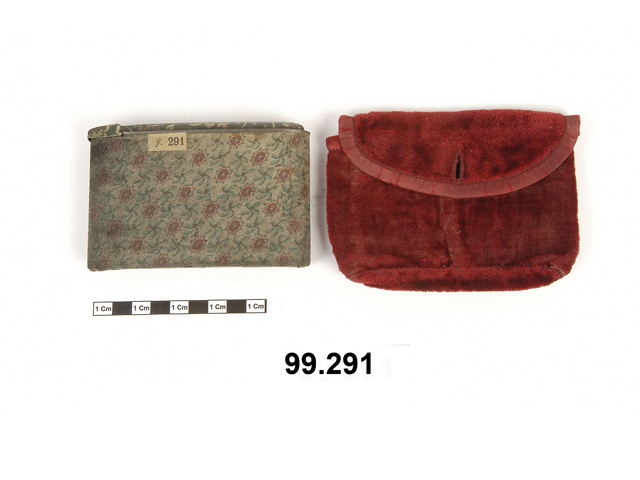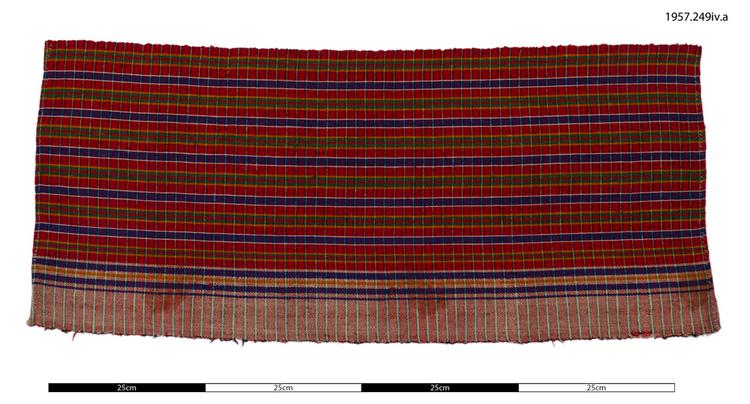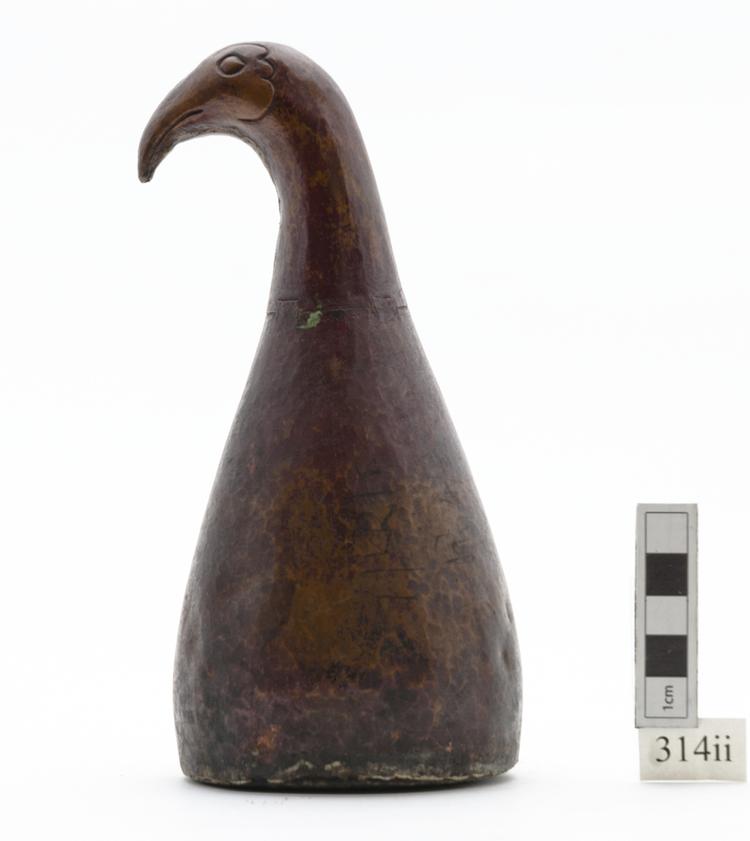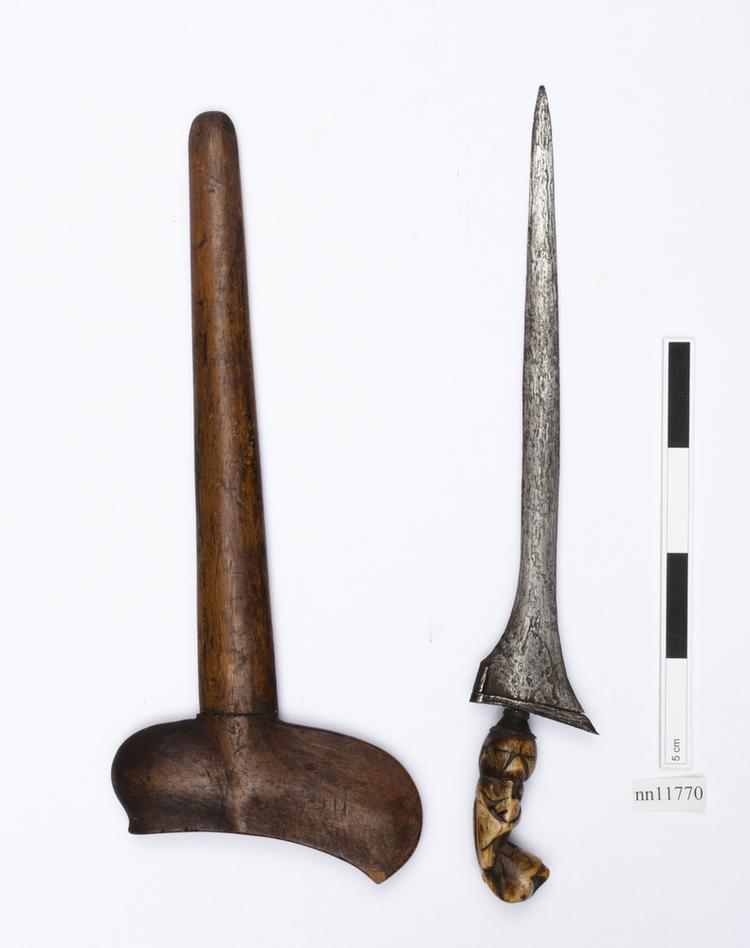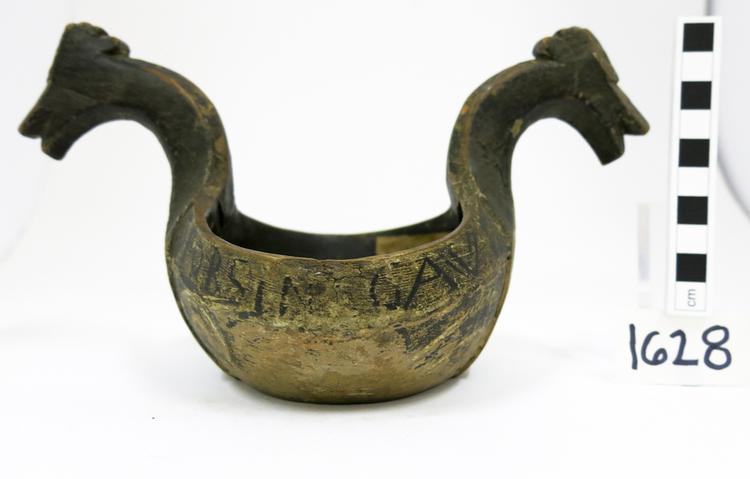
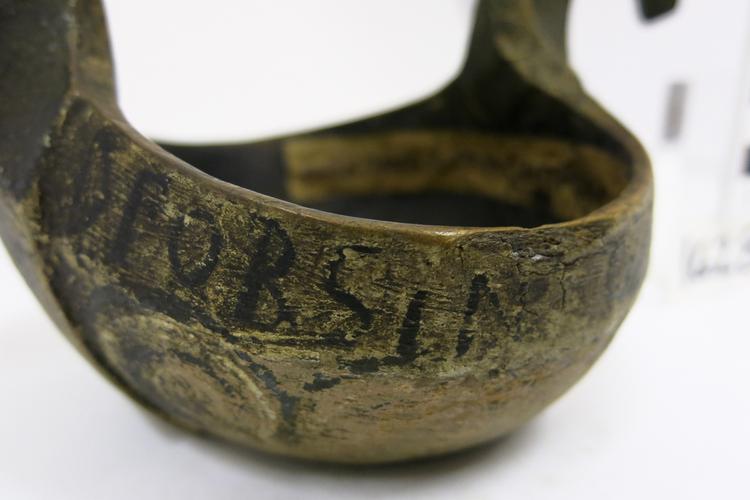
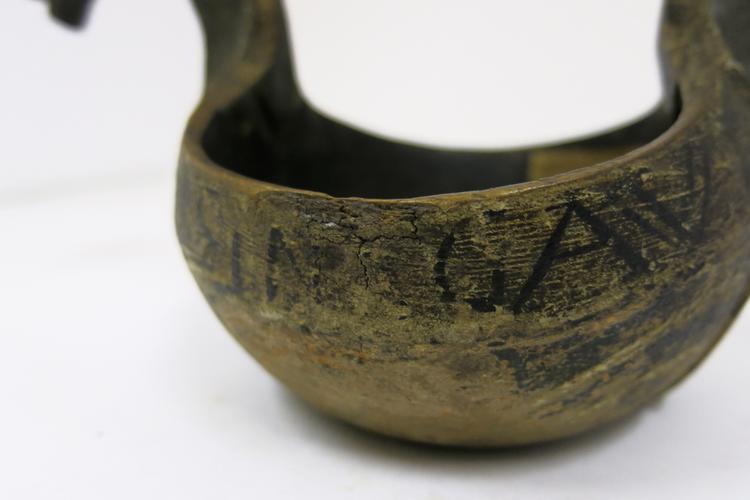
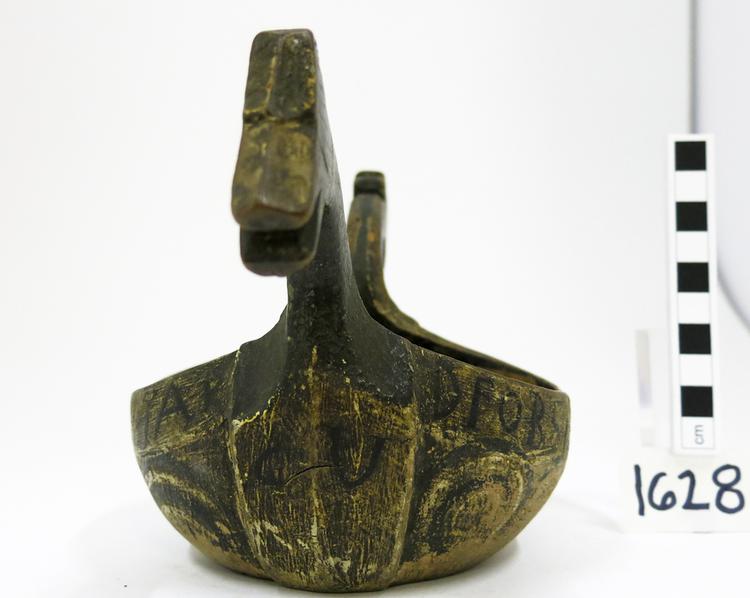
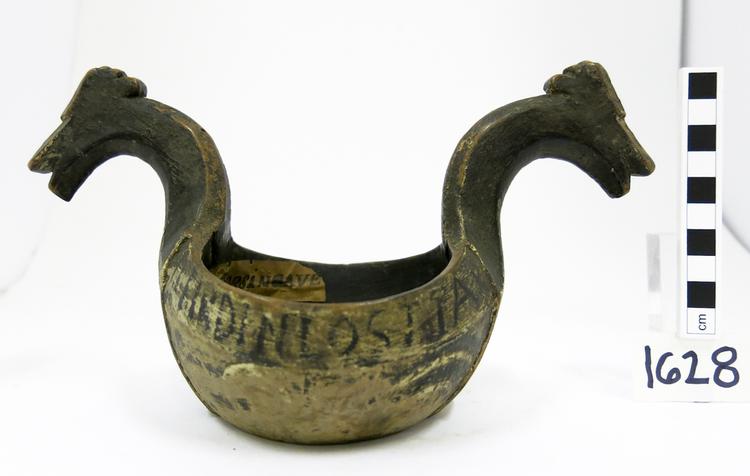
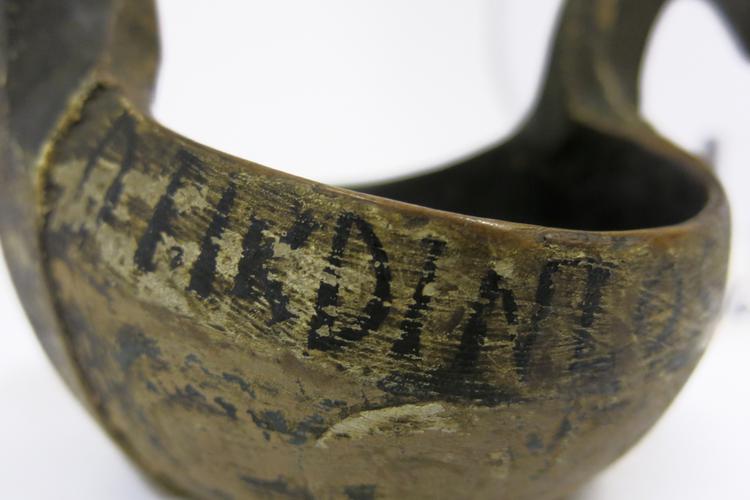
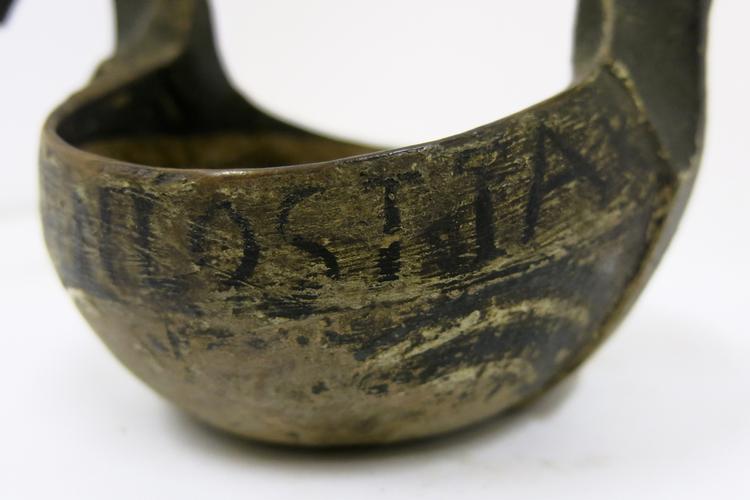
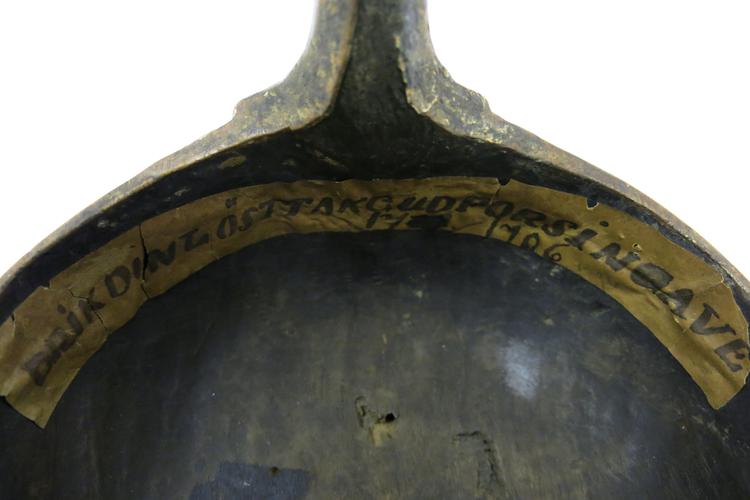
Wooden beer bowl with two handles in the form of what is termed a Viking drinking mug. The handles are formed by two rudely cut horses' heads, and the whole is from one piece of wood. Round the outer edge of the rim is the following inscription, painted black on a yellow ground: 'Drik din lösttak gud for sin gave 1796' and the initials G.U.R. The inscription translates roughly as: ' Drink your losttak for the sake of God's gift.' The other part of the bowl is painted red, yellow and black, but here again the colour is much worn in places. The hollow of the bowl is of an oval shape.



